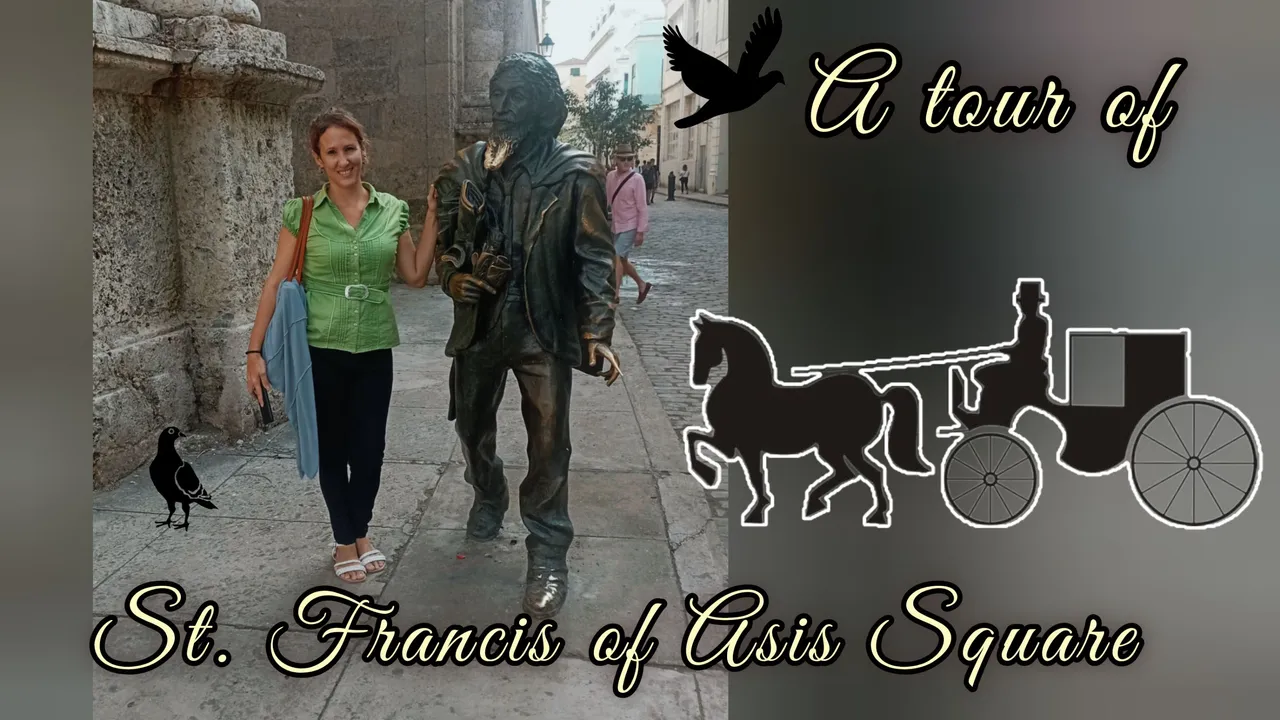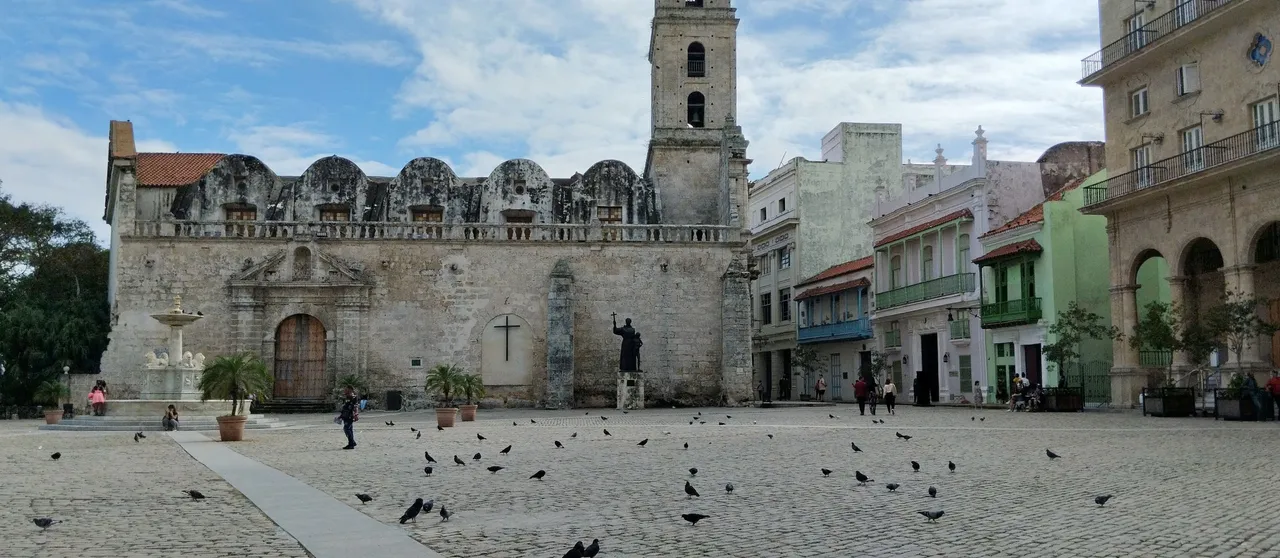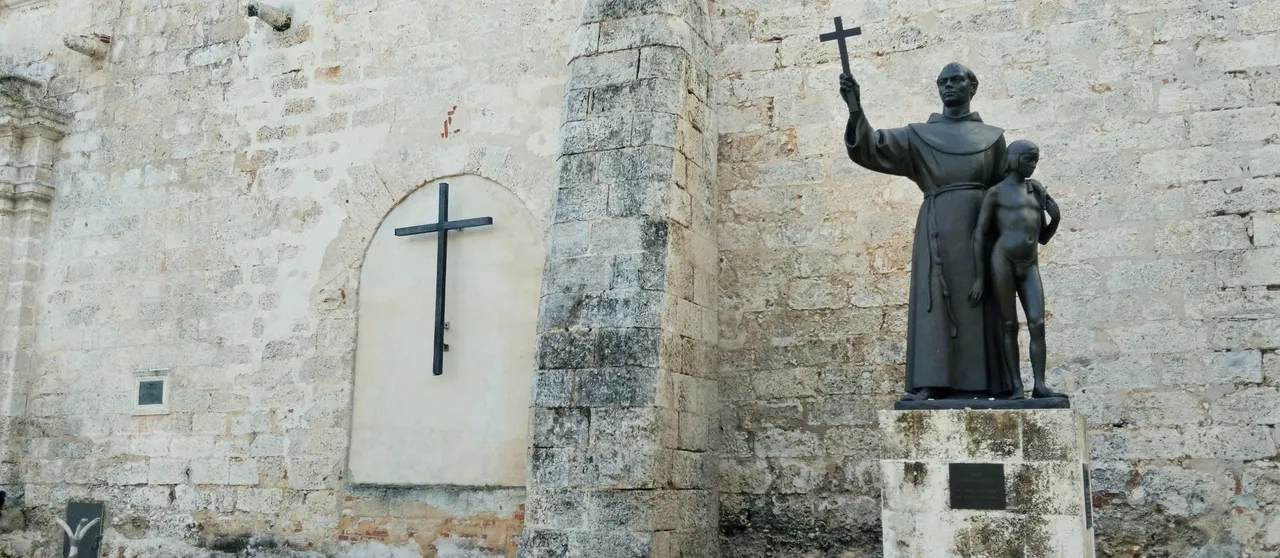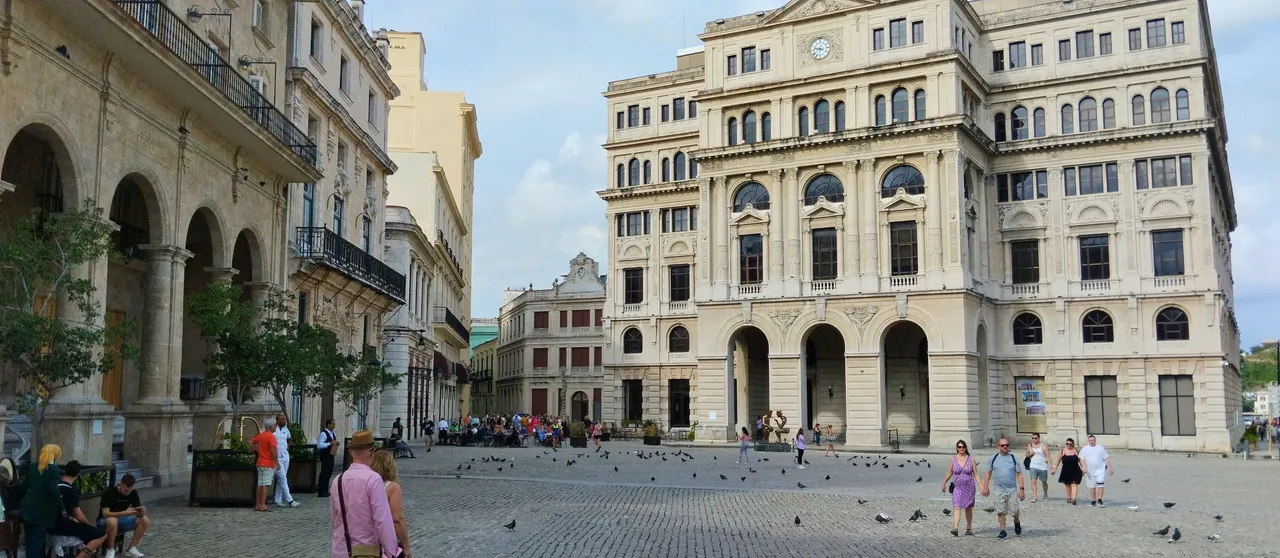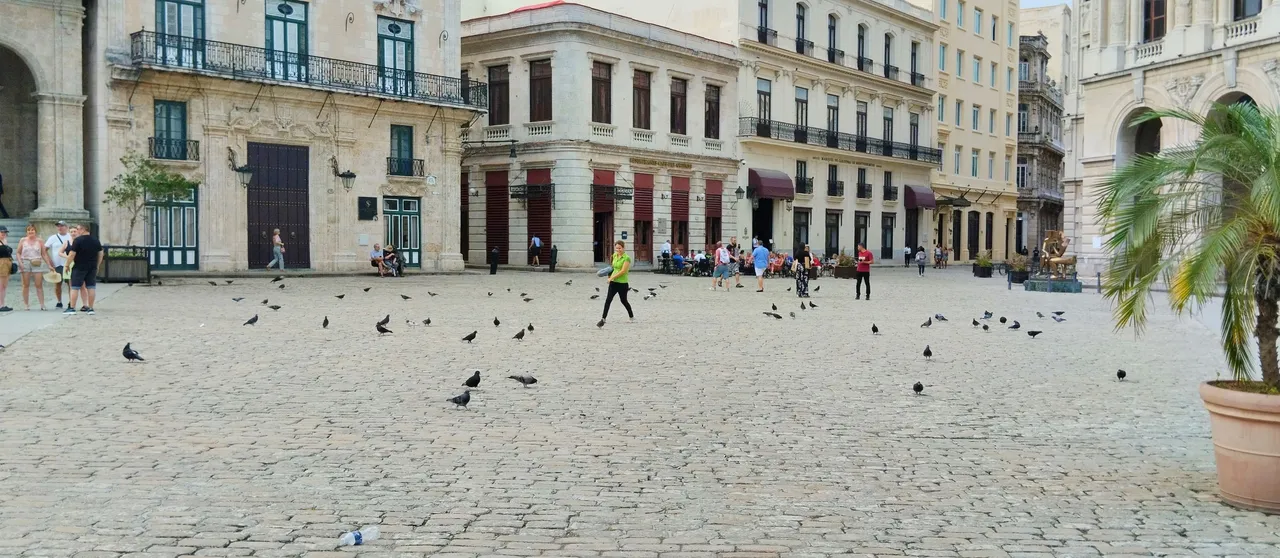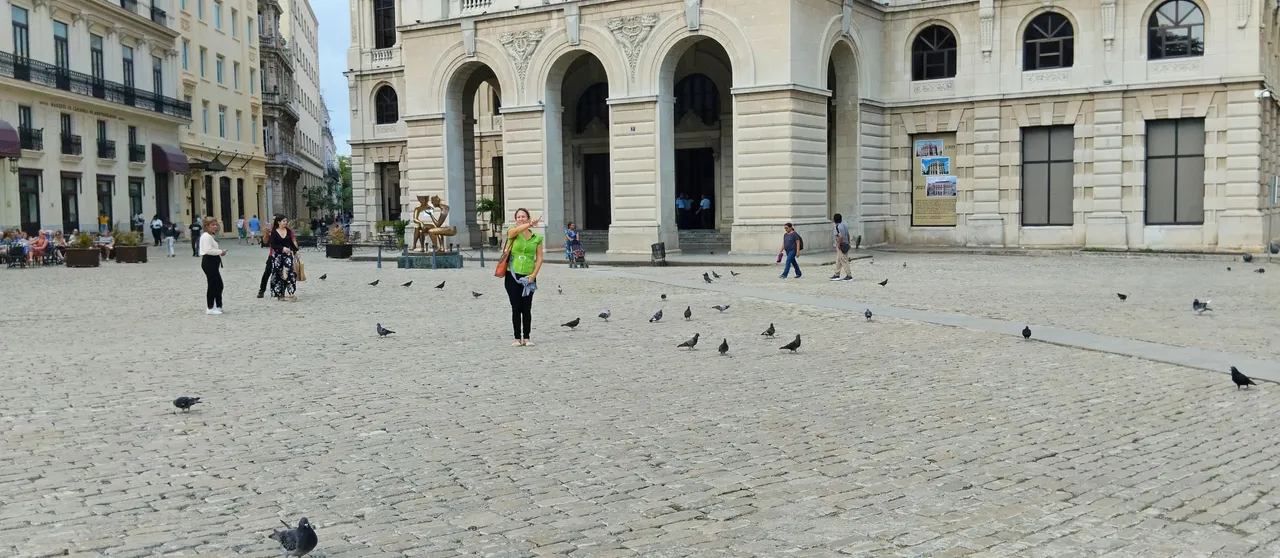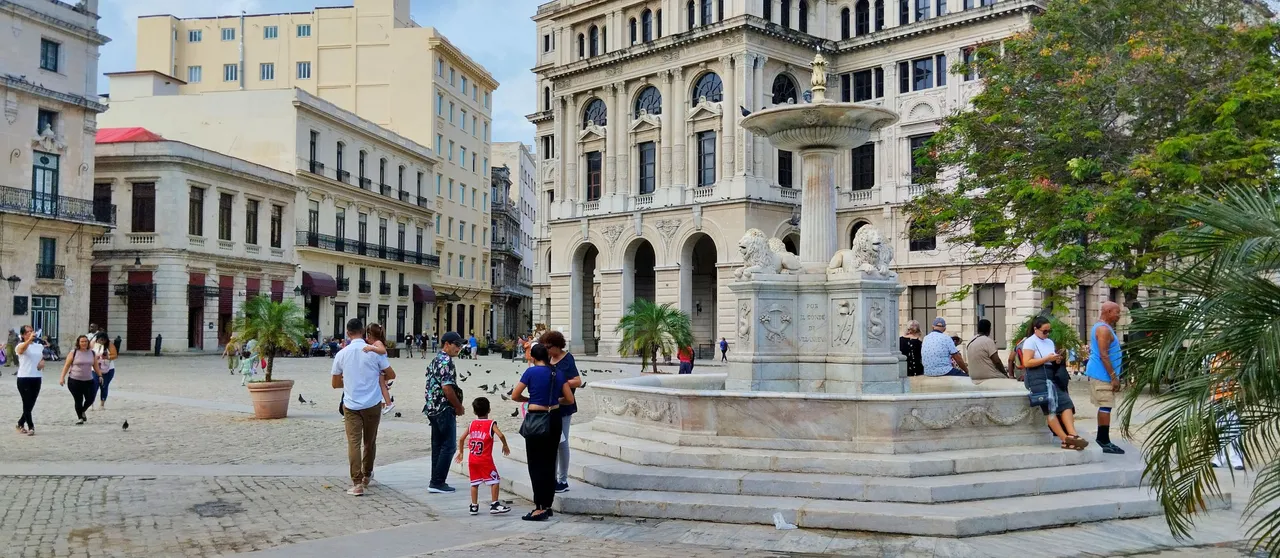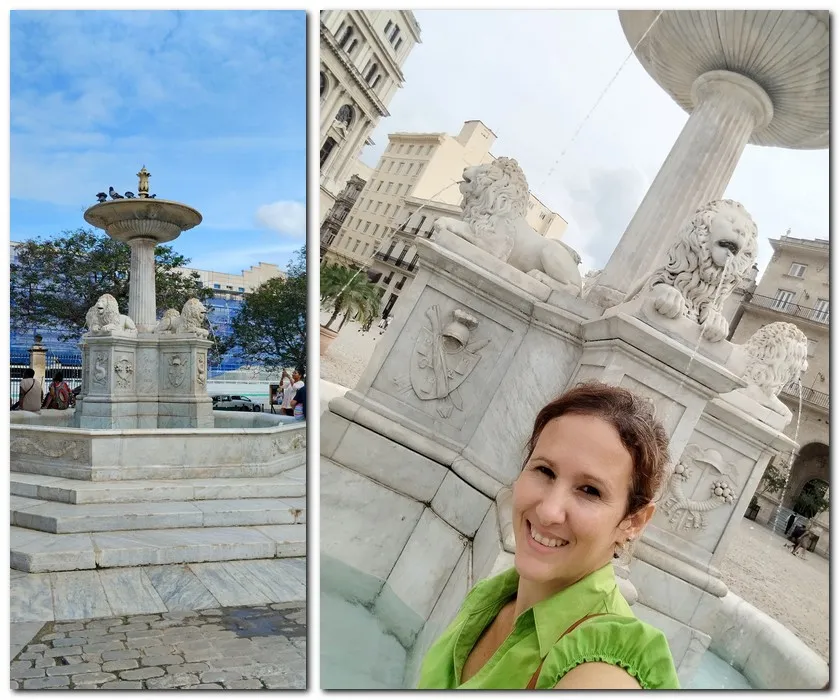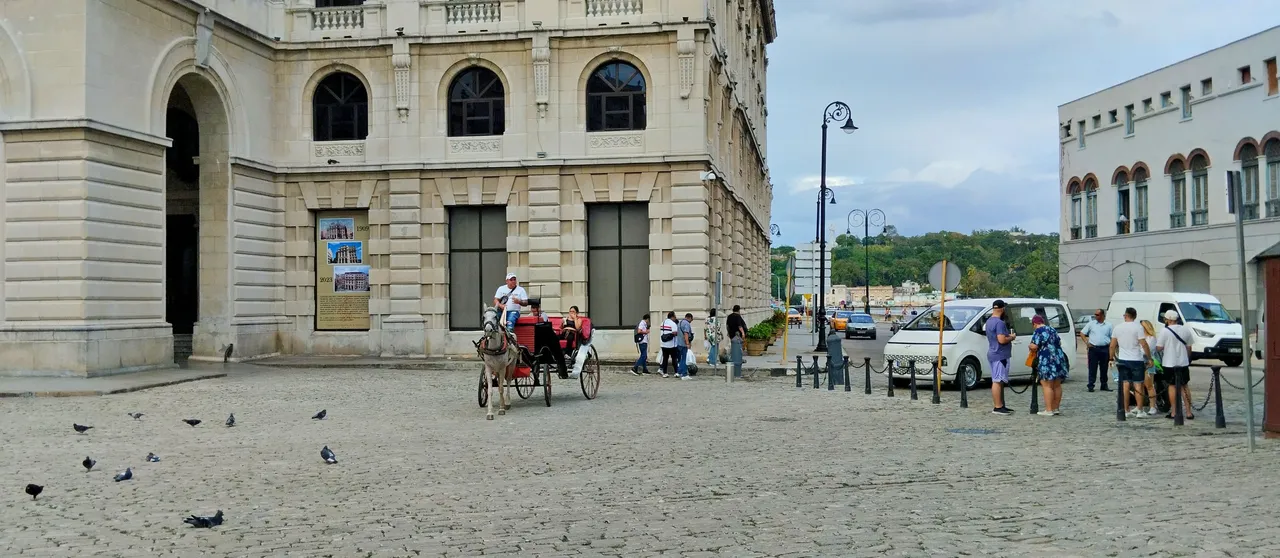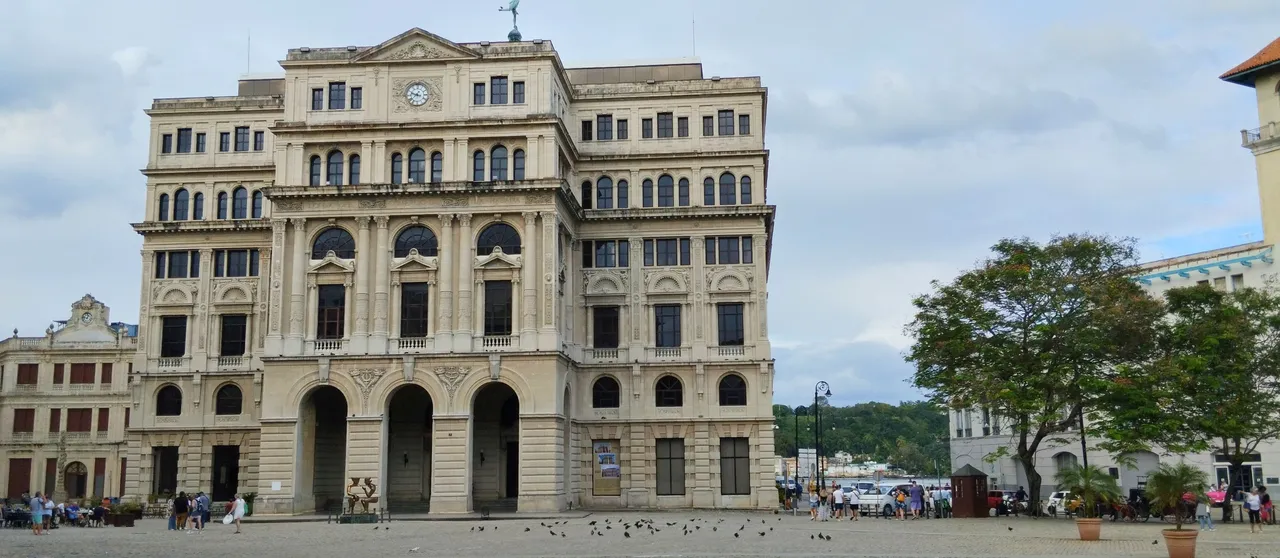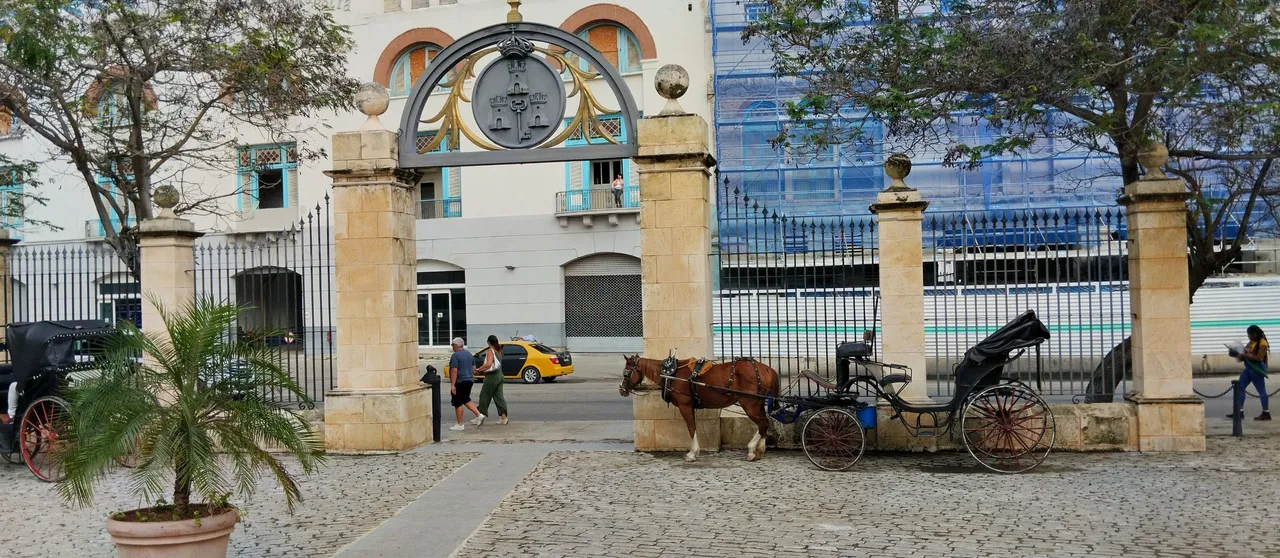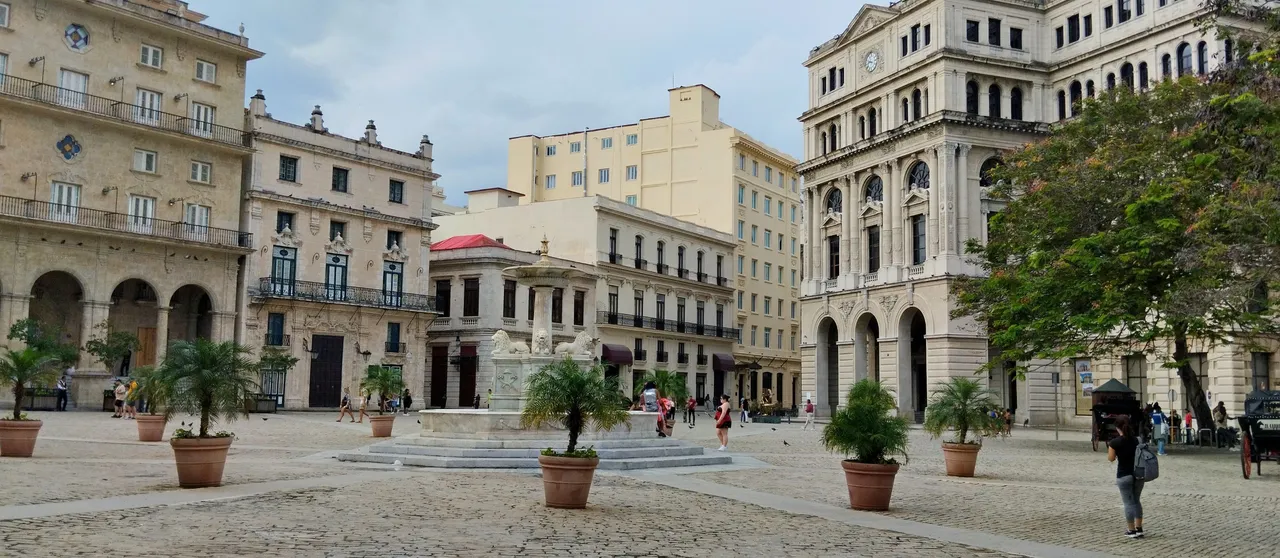I like to imagine 18th century Havana in its splendor and heyday. At the time when great buildings were built with their beautiful architecture and beautiful designs, which are still preserved today. I am in the Plaza de San Francisco de Asis, one of the four around which Havana's houses and buildings began to be built, and from which the city began to emerge. The most relevant of this square and from which it takes its name is the church that is located in the place, which was the convent of the Franciscan Order and is named after its saint, St. Francis of Assisi. The church stands on the site with its high bell tower and stone walls. Nowadays, after its restoration and due to the excellent acoustics inside, it houses a concert hall where different instrumental music orchestras perform. In front of one of its large wooden doors is the bronze sculpture of a figure that has become a symbol of the city, The Knight of Paris. This must be one of the most visited statues in Havana, everyone who comes to the Plaza takes a souvenir photo next to it, many people hold his finger hand or beard, that's why they are a little more worn. The Knight of Paris was a man who used to wander these streets and of whom many different stories were told, an enigmatic character. This square is also known as the square of the pigeons, because of the hundreds of them that are found here, you can see them on the ground, on the buildings and flying around. This is something that attracts a lot of visitors, especially children. In these photos I'm trying to get the pigeons to fly next to me to get a nice shot for a photo, but no way, they didn't want to fly away and just walked around me. On one side of the square, built in white marble, is the fountain of the lions, with its open jaws from which water gushes. In the center there is a small pillar from which a fine stream of water also flows into the interior. This large square is also very close to the Bay of Havana, from here you can see the sea. Nowadays, we can see the cruise ships entering the bay. An enchanting view. In addition to the church, the Plaza de San Francisco de Asis is surrounded by important buildings such as the Lonja del Comercio, the Cruise Terminal, the Hotel Palacio de los Corredores, and also the garden and Camposanto Madre Teresa de Calcuta. All these grandiose buildings, with their colonial architecture, are still preserved and form part of the beauty of the place. This place and all that is here was restored in the nineties, a great work that was done to preserve the great legacy of previous years. Visiting this square is something that never bores me, it is an amazing place that I always want to come back to. So far my publication, I am sure you will enjoy this tour as much as I did. Pasear por las calles del centro histórico de La Habana es uno de los recorridos que más disfruto hacer. Andar por aqui es caminar por unas calles que parecen inmunes al paso del tiempo. Puedo imaginar a las personas caminar por sus calles con su eterna mezcla de razas y clases sociales; españoles, criollos, mestizos y negros esclavos o escuchar los pregones de los vendedores ambulantes y sentir en los adoquines el traqueteo de los coches tirados por caballos. Me gusta imaginarme a la Habana del siglo XVIII en pleno esplendor y apogeo. En la época que se construyeron grandes edificaciones con su hermosa arquitectura y bellos diseños, los que se conservan en la actualidad. Me encuentro en La Plaza de San Francisco de Asis, una de las cuatro alrededor de las cuales se comenzaron a construir las viviendas y edificaciones de La Habana, y desde las cuales comenzó a emerger la ciudad. Lo más relevante de esta plaza y de la cual toma el nombre es la Iglesia que se encuentra en el lugar, la que fue el convento de la Orden de los Franciscanos y que lleva el nombre de su santo, San Francisco de Asís. La iglesia se alza en el lugar con su alto campanario y sus muros de piedra. En la actualidad, tras su restauración y debido a la excelente acústica en su interior, alberga una sala de conciertos donde se realizan las actuaciones de diferentes orquestas de música instrumental. Frente a una de sus grandes puertas de madera está la escultura en bronce de una figura que se ha vuelto símbolo de la ciudad, El Caballero de París. Está debe ser una de más estatuas más visitadas de la Habana, todo el que viene a la Plaza se toma una foto de recuerdo junto a ella, muchas personas lo sujetan del dedo la mano o de la barba por eso las tiene un poco mas desgastadas. El Caballero de París fue un hombre que solía deambular por estas calles y del que se contaban muchas historias diferentes, un personaje enigmatico. Esta plaza tambien se le conoce como la de las Palomas, por los cientos de ellas que se encuentran aquí, se las puede ver en el suelo, sobre los edificios y volando por los alrededores. Esto es algo que atrae mucho a los visitantes sobre todo a los niños. Las palomas están acostumbradas a la presencia de las personas y caminan por aquí como un transeúnte más. Recuerdo que cuando mi hijo era pequeño y veníamos de paseo a La Habana él le traía guisantes y se divertía mucho teniendolas a su alrededor. En el estás fotos estoy tratando de que las palomas vuelen al lado mio para tener una toma bonita para una foto, pero ni modo, no quisieron echarse a volar y solo caminaban a mi alrededor. A un costado de la plaza, construida en mármol blanco, está la fuente de los leones, con sus fauces abiertas de las que brota el agua. En el centro hay un pequeño pilar desde donde también sale un fino chorro de agua que cae en su interior. Esta gran plaza está también muy cerca de la Bahía de La Habana, desde aquí se puede ver el mar. En la actualidad, se pueden ver los cruceros que entran a la bahía. Una vista encantadora. Además de la iglesia, la Plaza de San Francisco de Asís está rodeada de importantes edificaciones como la Lonja del Comercio, la Terminal de Cruceros, el Hotel Palacio de los Corredores, y también el jardín y Camposanto Madre Teresa de Calcuta. Todas estas grandiosas edificaciones, con su arquitectura colonial, aún se conservan y forman parte de la belleza del lugar. Este lugar y todo lo que hay aquí se restauró en la década de los noventa, una gran labor que se realizó para conservar el grandioso legado de años anteriores. Visitar esta plaza es algo que no me aburre nunca, es un lugar asombroso al que siempre quiero volver. Hasta aqui mi publicación, estoy segura que van a disfrutar tanto como yo de este recorrido.